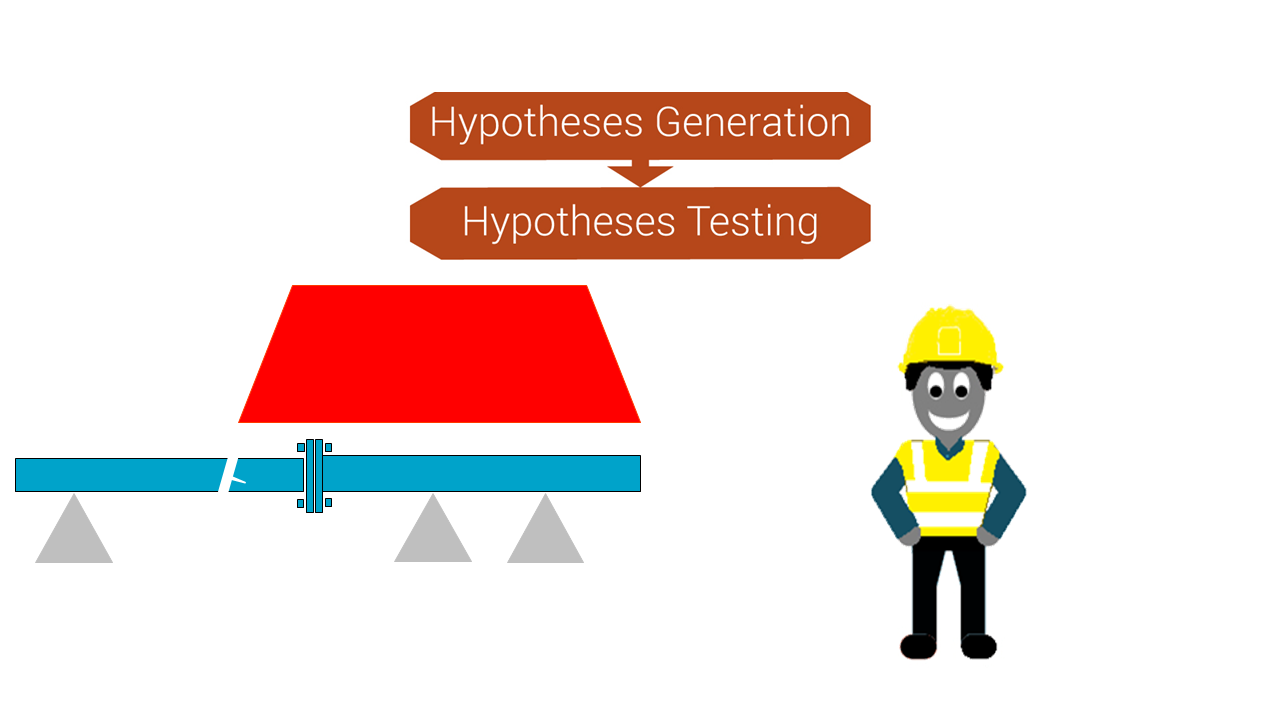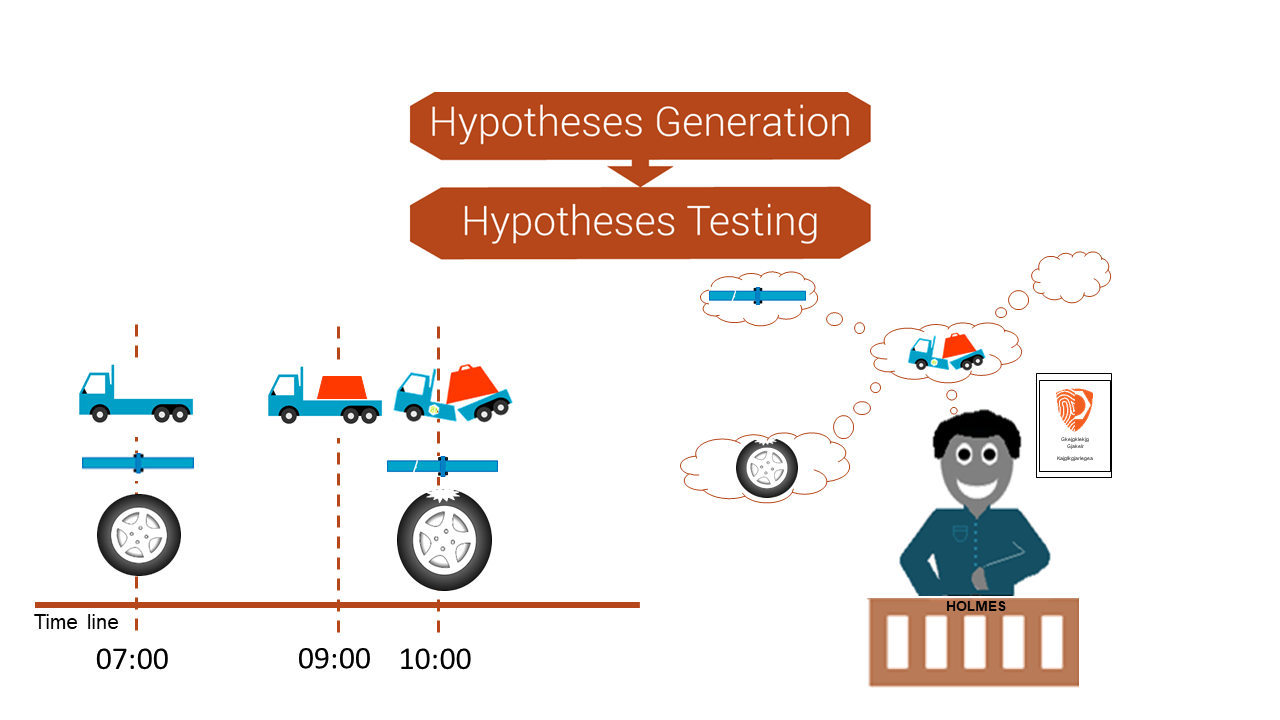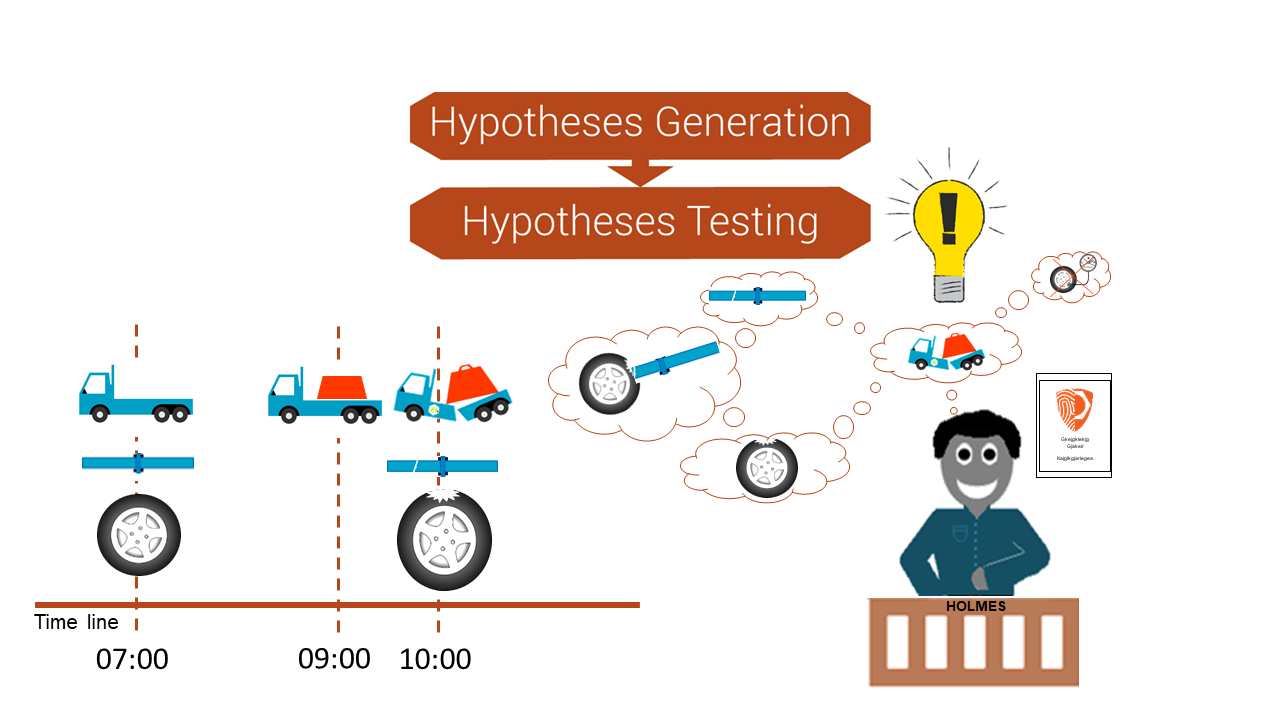Step 4: Hypotheses generation and testing
Course subject(s)
2. The Forensic Engineering Investigation
The next morning, you arrive at the office and look at the pictures that you took at the event scene. You see that the truck’s middle beam was broken and that the failure is not where you would expect it to be: at the connection. The connection is usually a weak spot, where the bolts can fail, especially when it is weakened by rust. In this case, however, the main middle beam is broken. You look at the fracture and see that the beam thickness is not uniform. There is an area where the beam is thinner compared to the rest of the beam, this is also the location where the beam broke.

You make a calculation and determine that the strength of the frame was insufficient at the location where the beam broke. You discuss your findings with the engineer from the truck manufacturer. The design engineer agrees with your calculation. He suggests to perform a experiment on an identical beam with the observed dimensions. This is great news, because now you can test your findings. The experiment is scheduled, and you are able to attend the test.

Indeed, the experiment shows that 8500 kg of sand will break the beam. The experiment further shows that the beam broke in a similar way as you had observed at the event.
Now our attention is directed towards determining the sequence of events. It’s not clear what could have occurred first: the tire failure or the failure of the beam. What is known is that when Tiny checked the truck at 7 AM, both the tires and the truck (including the beam) were found to be okay. However, at the scene you found the tires to be burst and the beam to be broken. We can put these observations in a logical order as shown in the image below.

We have the hypothesis that too much pressure in the tires made them fail. But did we miss something? Could the beam have damaged the tires? Instead of a high pressure failure, is it not a puncture? You re-examine the photographs you have taken. Indeed, you now see red paint marks on the tire’s edge. You didn’t notice this before. This new information opens the opportunity of a new sequence of events.


Forensic Engineering: Learning from failures by TU Delft OpenCourseWare is licensed under a Creative Commons Attribution-NonCommercial-ShareAlike 4.0 International License.
Based on a work at https://ocw.tudelft.nl/courses/forensic-enginee…earning-failures/.



